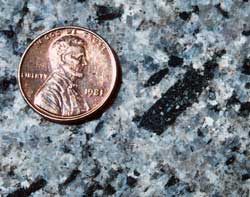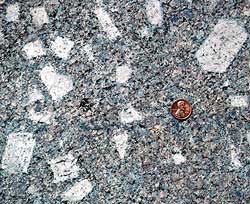Yosemite National Park Rocks
The vast majority of Yosemite is comprised of plutonic igneous rocks. Plutonic rocks forms deep underground when molten rock cools and solidifies very slowly, allowing large crystals to form. In contrast, volcanic igneous rocks form at the surface when molten rock cools and solidifies quickly, resulting in small crystals. Granite, granodiorite, tonalite, quartz monzonite, and quartz monzodiorite are all forms of plutonic rock that are found in Yosemite, and are loosely referred to as granitic rocks. Quartz diorite, diorite and gabbro are plutonic rocks found in Yosemite, but are not technically considered to be granitic rocks. Plutonic rocks are primarily comprised of 5 minerals: quartz, potassium feldspar, plagioclase feldspar, biotite, and hornblende. Plutonic rocks, including granitic rocks, differ primarily in the relative proportions of quartz and feldspar, although texture is also an important consideration. The plutonic rocks were generally formed during the Cretaceous period.
 |
| Half Dome Granodiorite at Olmsted Point. The U.S. penny is used for scale. |
Volcanic igneous rocks are erupted onto the Earth's surface and cool/solidify much more quickly that plutonic igneous rocks. There are small amounts of volcanic igneous rocks within Yosemite and large amounts east of the Sierra Nevada Crest. The volcanic rocks inside the park include basalt flows, latite tuff, and latite lava flows. The volcanic rocks outside the park include these same rocks as well as ash-flow tuff, rhyolite, pumice, obsidian, etc. The Mono Craters, east and southeast of the park, are volcanoes that erupted 3,000 to 550 years before present. The Inyo Craters, southeast of the park, are volcanoes that erupted 40,000 to 3,000 years before present.
